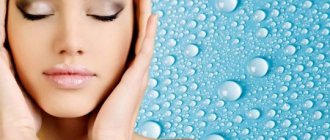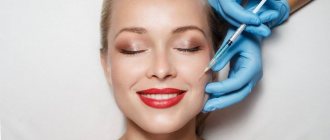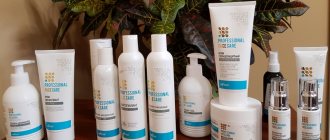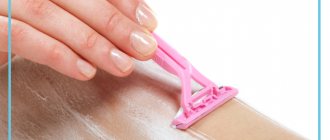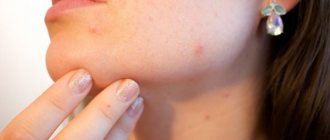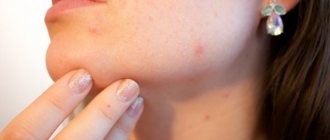Plasmolifting is an injection cosmetic technique that involves the subcutaneous administration of the patient’s own plasma enriched with platelets. To do this, blood is first taken from a vein, which is then placed in a centrifuge, where it is divided into several fractions. The portion with platelets that will be used for injection is separated from the test tube. Since the procedure involves collecting the patient’s venous blood, proper preparation for facial plasma lifting is required for a better result and prevention of negative consequences. It is important to strictly follow the rules announced by the doctor, otherwise the effect after manipulation may decrease.
The essence of the procedure
The main active ingredient in the plasma lifting procedure is the patient’s own blood, processed by a special method. During this treatment, plasma with an increased concentration of platelets is released. Platelets are known to contain growth factors responsible not only for blood clotting, but also for the regeneration and growth of young tissue. In addition, platelets have the ability to accumulate around problem areas in tissues, thus the action of growth factors becomes targeted. Under the influence of growth factors, new blood vessels grow, as a result of which tissue oxygenation improves, the influx of nutrients increases and, as a result, complexion improves, pigmentation and severity of wrinkles decrease, and the oval of the face tightens
Indications and contraindications
Plasma therapy is recommended for patients with the following facial skin problems:
• decrease in tightness, elasticity, firmness; • signs of photoaging; • wrinkles, folds, creases; • hyperpigmentation; • acne of varying severity; • peeling, excessive dryness; • scars, scars, post-acne; • unhealthy color; • bags and dark circles under the eyes; • enlarged pores. Conditions and diseases for which it is contraindicated to resort to the • technique: pregnancy, breastfeeding; • malignant and benign formations in the affected area; • oncological processes of various localizations; • autoimmune pathologies; • acute viral or infectious diseases; • chronic pathologies in the acute stage; • damage to the integrity of the skin in the area of intended treatment; • severe form of arterial hypertension; • decompensated diabetes mellitus; • diseases of the hematopoietic system; • severe mental disorders, central nervous system diseases; • hormonal and endocrine disorders.; • allergy to anticoagulants; • critical days.
How does the procedure work?
The plasma lifting procedure is quite simple. It is carried out on an outpatient basis and lasts about an hour. To eliminate pain, local anesthesia is used. At the first stage, the doctor at our center will draw blood from the patient into a test tube, approximately 9-20 ml. Next, the test tube with the material is processed in a special centrifuge, during which the blood is divided into fractions: red blood cells and plasma with a high platelet content. The latter becomes the active ingredient of the procedure.
IMPORTANT!!! One of the key factors ensuring the effectiveness and safety of the procedure is the use of original tubes.
Test tubes for plasma lifting contain:
- Anticoagulant (sodium heparin), which prevents blood clotting and prevents platelet aggregation (sticking together)
- A separation gel filter that separates platelet suspension from blood components and allows one to obtain autologous plasma with pronounced therapeutic properties. The forming separation layer does not allow the red blood cell mass to mix with the plasma even when the tubes are in a horizontal position.
At the second stage, platelet-rich plasma is injected into the skin of the problem area. Released in the skin, the active components of the plasma begin to work after the first procedure, and a sustainable rejuvenating and healing effect becomes noticeable after the second or third session. In most cases, to eliminate age-related manifestations, 4-5 procedures are sufficient, which are carried out at intervals of 2-3 weeks.
Plasmolifting for hair treatment
Of particular note is the use of this technique in the treatment of alopecia. Platelet autoplasma injected into the patient’s skin prevents the death of hair follicles and “switches” them from the loss phase to the growth phase. Microcirculation improves, pathogenic microflora is suppressed, and nutrition of the hair follicle is activated. There is an increase in hair growth, a cessation of the process of hair loss, and an improvement in the quality of the hair shaft. Hair gains shine, elasticity and thickness. Plasmolifting of the scalp is the procedure of choice for oily seborrhea and dandruff.
How to prepare for the procedure and what to follow after
- 2-3 days before the procedure you should
- Eliminate sour, fried, salty, spicy and smoked foods from your daily diet. As for drinks, you should not drink coffee, strong tea and, of course, alcohol.
- Drink more fluid (at least 2 liters per day)
- Reduce the intensity of physical activity (if possible, of course)
- Stop smoking on the day of the procedure
- We eat 3-4 hours before the procedure
- The procedure is best done in the morning
Plasmolifting in cosmetology
Injection cosmetology is a popular and effective area of aesthetic medicine, which has many fans around the world. But not all patients are in a hurry to resort to “beauty injections” because, in particular, they are wary of cosmetic preparations, despite their safety and the availability of all certificates. For such people, plasma lifting - injections of their own plasma - will be a real salvation in caring for their beauty. We talked with our dermatovenerologist, cosmetologist and trichologist Irina Anatolyevna Orlova and found out why you should pay attention to this procedure.
What is good about plasma lifting?
This injection procedure has enough benefits that have made it popular among patients. Firstly, this is the scope of its application: with the help of plasma lifting you can improve the condition of the skin, cure problematic skin with acne and post-acne scars, rejuvenate it and give it elasticity. Secondly, the use of the skin’s own plasma makes the procedure completely hypoallergenic. And thirdly, it has a wide range of applications and can be performed not only on the face, but also on the scalp. Many doctors recommend starting your acquaintance with injection cosmetology with plasma lifting.
What is facial plasmolifting?
Many Internet users mistakenly compare plasma lifting and mesotherapy, but in essence, mesotherapy is a technique for administering any medications in microdoses.
Once in the skin, the plasma starts the process of cell regeneration, which is evident from the result of the procedure: the face acquires radiance, skin tone increases, and fine wrinkles are smoothed out. Plasmolifting can be performed both in youth and in adulthood, because it will be useful for the skin of the face and head at any age.
When should plasma lifting be done?
How do you know when it’s time for you to undergo facial plasma lifting? It’s very simple, this procedure has its own number of indications:
- Age-related skin changes (chronoaging)
- Deterioration of skin condition after sun exposure (photoaging)
- Acne and post-acne
- Sensitive, “stressed” skin
- Dermatological diseases (atopic dermatitis, psoriasis, eczema)
We've sorted out the face, but what about plasma lifting of the head? Here, too, there are indications for when this procedure will be effective:
- Weak, brittle, split ends hair
- Seborrhea (dandruff)
- Hair loss (alopecia areata/diffuse alopecia/androgenetic alopecia)
- Reduction of hair volume and deterioration in its quality
Plasmolifting for hair
We have already figured out why you need to do plasma lifting for the face, and now let's look at plasma lifting for hair. Due to the fact that plasma microinjections trigger metabolic processes in tissues, this procedure can also be done on the scalp. A plasma lifting course will help your hair acquire healthy shine, strength and “wake up” dormant hair follicles. This means that your hairstyle will gain significant volume due to the fact that new hair will begin to actively grow, which will look well-groomed and attractive. After this, people around you will vying with each other for the phone number of your cosmetologist-trichologist.
Pros and cons of plasma lifting
Any injection procedure has its pros and cons, so we will now look at this in more detail. Analyzing the advantages and disadvantages of plasma lifting, we can definitely conclude that there are more advantages:
- Wide range of applications
- No risk of allergies
- Efficiency
- Safety of the procedure
Among the disadvantages of plasma lifting, the following can be noted:
- Bruising is possible, as after any injection procedure
- A blood draw is required. If you have anemia, low hemoglobin or platelet levels, you will first have to bring these indicators back to normal
Before the procedure, be sure to take a general blood test so that the specialist understands your hemoglobin and platelet levels. If you want to do plasma lifting, check prices and promotions with your cosmetologist.
Plasmolifting and biorevitalization
Cosmetologists recommend that patients not compare these two procedures. During biorevitalization, the active component is preparations based on hyaluronic acid, which deeply moisturize the skin. Plasmolifting also has a moisturizing effect on tissue, but the main effect is in the regeneration of skin cells. If we talk about plasma lifting and biorevitalization of the scalp, then in this regard microinjections of plasma will be more intense in order to activate hair growth. Therefore, when choosing a procedure, consult with a cosmetologist and discuss your goals and wishes. Then he will be able to choose exactly what you need.
Questions and answers from a cosmetologist
How to prepare for plasma lifting?
— Preparation for plasma lifting includes the following steps. The night before the procedure, you should not eat anything fatty, spicy, smoked, or pickled, only a light dinner. A few days before the procedure, you need to drink a little more water. On the day of the procedure, an hour before the session, you should try not to eat anything, but drink enough water. If we are talking about plasma lifting of the head, then be sure to wash your hair the day before the procedure or on the day of the procedure.
How often do plasma lifting procedures need to be done?
-To eliminate imperfections:
For mature and young skin, there are recommendations to do it in a course of 4-6 procedures, once every 1-2 weeks, and then to maintain the effect, you can perform it once a month for a year.
To maintain beauty:
You can perform plasma lifting 1-2 times a year.
Preparation for facial plastic surgery or laser resurfacing:
It is necessary to do 1 procedure a week before the intervention and two weeks after.
What problems can plasma lifting solve?
-Plasmolifting gives the facial skin freshness, glow, good color, deeply moisturizing it and smoothing out fine wrinkles. Plasma injections also add a noticeable lifting effect and correct mild pigmentation and inflammation, such as acne. In trichology, plasmolifting has the effect of activating hair growth, stopping hair loss, and normalizing the condition of the scalp. The procedures can remove itching, burning, seborrhea, and give elasticity to the hair shaft, because they specifically act on its root.
Post-procedural period
It should be remembered that the presence of microhematomas and slight swelling in the area of impact is a normal phenomenon when performing injection techniques.
However, some rules must be followed:
- Refusal of decorative cosmetics and cosmetics for a day. If the eye area was not touched, you can paint your eyelashes.
- Avoid touching, scratching or rubbing your face for up to 24 hours
- After washing, treat the skin with an aqueous solution of chlorhexedine for 2-3 days.
- Saunas, steam baths, swimming pools are prohibited for 2 weeks. Considering this, and the fact that the full course consists of at least 4 procedures performed at intervals of 2 weeks, it should be understood that visiting such establishments is excluded for the entire course of plasma lifting. Sauna, hammam, bathhouse and other similar pastimes lead to irritation of injured skin and also promote the growth of bacteria in a humid environment
- Refusal from solarium and open sun until the face is completely restored. In the future, sunbathing is possible with the application of sunscreen
- Intense physical activity is also prohibited during the period of restoration of facial tissues, since excessive sweating may cause inflammation of micro-wounds after injections
- “Can I drink after plasma lifting?” the most frequently asked question. Alcohol slows down the body's recovery processes and also increases swelling. Therefore, at least on the first day, it is better to give up alcoholic beverages.
Plasmolifting for acne
Everyone knows this method of treating acne as autohemotherapy, when the patient’s blood taken from a vein is injected intramuscularly according to a certain scheme. This achieves an increase in immune defense mechanisms, an anti-inflammatory and healing effect. Plasmolifting is essentially a type of autohemotherapy, but thanks to highly purified plasma, it has become possible for local intradermal administration in the area of the face, décolleté, and back, which makes it possible to achieve a more pronounced effect in the treatment of acne.
Combination with other procedures
Plasmolifting is a very flexible procedure. The main active ingredient is always a person’s own plasma, but it can also be combined with other drugs and hardware techniques. This allows you to enhance the effect of the procedure, prolong the result and complement it. for example, we add hyaluronic acid, peptides and amino acids to the composition of the drug. In our center we combine plasma lifting with laser procedures. As a result, the procedure gives a lifting effect, moisturizes the skin, treats acne and post-acne, etc.
Receiving plasma
Blood plasma contains glucose, amino acids, proteins, enzymes, hormones and minerals necessary to activate vital processes in the body. That is why the liquid fraction is used in anti-aging procedures.
Plasma is obtained by centrifugation - hardware separation of formed elements from serum. The procedure time is approximately 40 minutes.
It is advisable to donate blood in the morning on an empty stomach. In this case, the specialist takes into account factors that can affect the composition of the plasma: the emotional state, level of load, and the patient’s diet.

